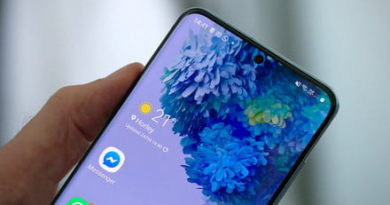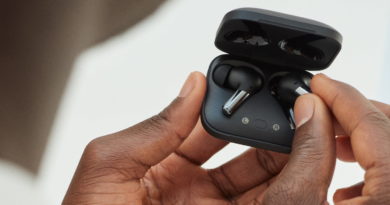How to Fix a Dead Pixel on Your Monitor or Smartphone
[ad_1]
Pixels create the images you see on your computer monitor or smartphone screen. When pixels “die” or go out, you might notice a dark spot that wasn’t there before. A dead pixel can be a significant problem because it can spread to other parts of your screen.
If your PC is no longer under warranty or you don’t want to take it to a professional, don’t despair. We’ll show you how to fix this common issue.
JScreenFix (web)

JScreenFix is the ideal pixel-fixing solution for everyone. It’s a web application, meaning no downloads are necessary. This also makes it suitable for a wide variety of platforms, including iOS and MacOS.
Step 1: Open your favorite browser and navigate to the JScreenFix homepage.
Step 2: Click the blue Launch JScreenFix button at the bottom of the page.
Step 3: Drag the white noise window to where your stuck or dead pixel is located, and then let it run for half an hour.
JScreenFix claims it can repair most stuck pixels in under 10 minutes, but giving it plenty of time to work never hurts. Try using it several times if the first run wasn’t successful.
Keep in mind that this method uses both HTLM5 and JavaScript and may work with LCD or OLED screens. JScreenFix reports a success rate of greater than 60% for restoring stuck pixels. Although your mileage may vary, that’s quite an endorsement for the free tool.
If it doesn’t work, though, you could always try one of the platform-specific tools below.
PixelHealer (Windows)

PixelHealer is an entirely free application from Aurelitec that fixes pixel problems. It’s compatible with many versions of Windows, from Windows 10 back to Windows 7.
Once downloaded, PixelHealer will present you with a colored box window and a settings menu. Either click and drag or use the position and size options to place the color box over the area of dead or stuck pixels. Taking care not to look directly at the box (especially if you’re sensitive to flashing images), click the Start Flashing button.
The window will then flash multiple colors in quick succession. Leave it on for 30 minutes, and then check the pixel again. Try this a few times to see if it works. It’s more likely to work on a stuck pixel that shows signs of life than a dead pixel, which may stay unresponsive, but there’s a chance it can fix both, so give this method a try regardless of how your wounded pixel is behaving.
If you aren’t exactly sure where your pixel problem is, you can use the aptly-titled InjuredPixels application. The freemium pixel detector allows you to blank out your screen in multiple colors to test the display. The stuck or dead pixels will then show up against the color wall depending on the damage, which makes them easy to identify.
Dead Pixels Test and Fix (Android)

With such a straightforward name, you know that Dead Pixel Test and Fix (DPTF) is a quick and easy method for locating and potentially repairing dead or stuck pixels. It’s a free app and features an interface that is both self-explanatory and easy to navigate. Like other apps on the list, DPTF goes through different colors to help you locate the dead pixel on your screen. It also can help you identify stuck pixels by showing a series of flashing screens.
Use the Check Dead Pixels function to look for any dead pixels on your display. If you spot some, switch to Fix Dead Pixel, which displays colored noise and bands of different colors over a set period. The developers recommend that you let DPTF run for at least 10 minutes to fix all of the pixels, but we had better results when we left it running for a couple of hours so it had time to fix all of the dead pixels. Your device is likely to use a lot of power when running this application, so make sure you have a full charge or plug in your power supply before starting.
Editors’ Recommendations
[ad_2]
Source link


